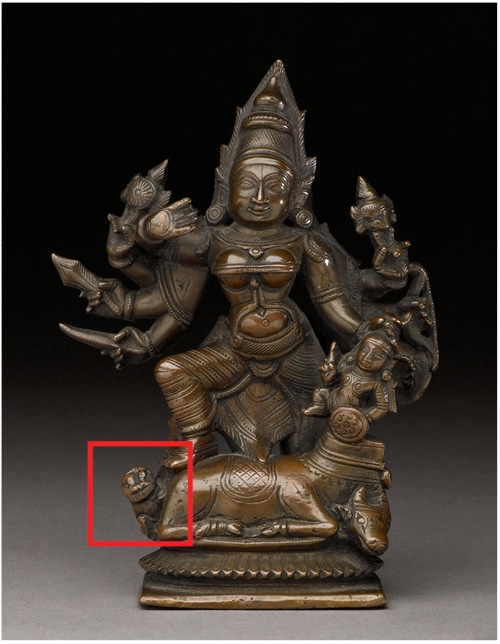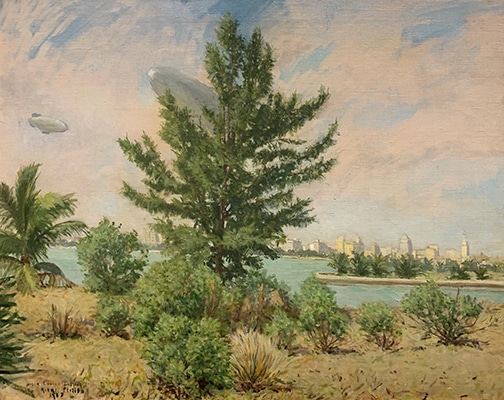In 1997, I read the debut novel The God of Small Things by Indian writer Arundhati Roy. Its central characters are two children (fraternal twins) and woven through the story are plot twists that show just how much the small things affect their behavior and the momentum of their lives. It is a hauntingly good book. The power of small things, and especially religious sculpture from the Harn’s Asian collections, has often reminded me of this book and its title.
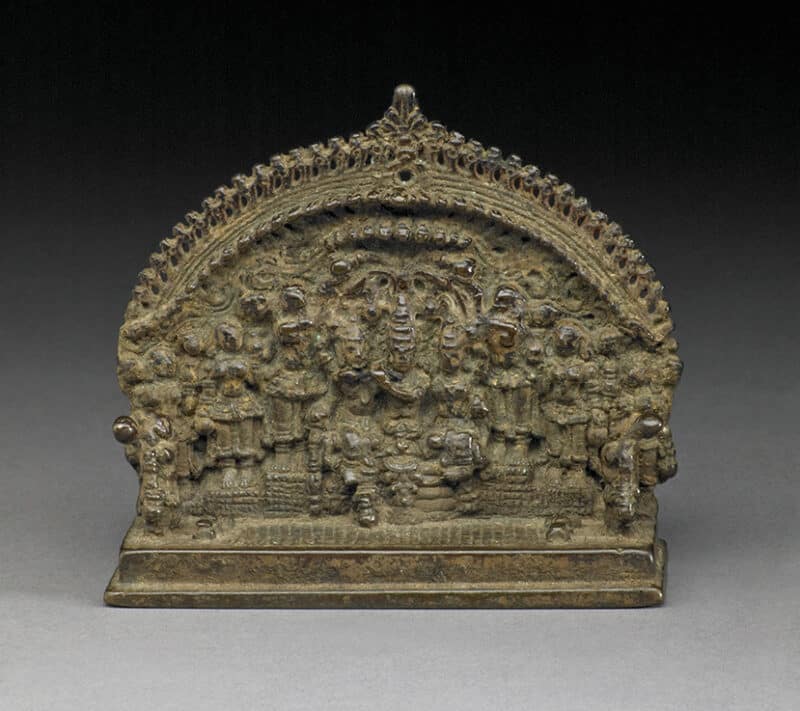
This complex miniature altar made of cast bronze measures only 3 1/8 inches, and yet it shows an abundance of figures. Krishna, the beloved avatar of the god Vishnu, is surrounded by attendants and his loyal gopis (cowherd girls) in a mini architectural setting. Above Krishna is a multi-headed hooded snake, or naga, which provides a canopy of shade and also marks his importance. Some details are hard to make out like the fact that Krishna is playing his flute—the sound of Krishna’s music is described in literary sources as irresistible to people and animals, as well as to rivers and clouds. This intoxication is a metaphor for the soul’s longing for God. Other details that are clear enough are that the artist intentionally made a stage for the scene by elevating the group on a platform and even making a realistic space on the textured floor before the scene.
What makes miniatures so special is how personal they are and this fits in well with the popular practice of bhakti, or worship through personal love and devotion. Because they are so small, the figures are defined by their scale in relation to our bodies—they can be held in the hand or held close to the heart, for example. Contrast that to visiting an awe-inspiring temple on a large scale, where our identity is defined more by the inclusion in something larger, or our body is one cog in the wheel of a larger ritual or purpose. In this small bronze, you can see areas that are shiny with wear, perhaps rubbed by the devotee in prayer or polished over time in a pocket or garment. When packed along for travel, these tiny bronzes also could have the protective power of an amulet or talisman.
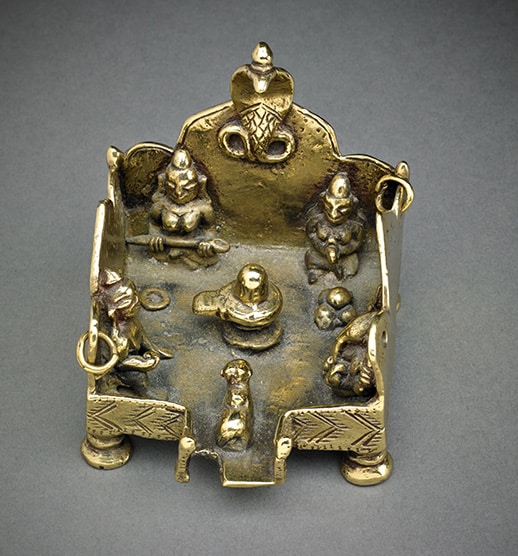
Miniature shrines are intimate and are kept in the home for private worship. This South Indian brass shrine stands less than 3 inches tall. Here we have a family portrait of sorts—the kin of the god Shiva including his son Ganesha (bottom right and in the image on the left); Annapurna, an incarnation of his consort Parvati, with her giant ladle (top left); and the bull Nandi, his loyal vahana or animal (center front). At the center of this diminutive altar is nothing less than the symbol of generative power itself. The lingam-yoni symbolizes Shiva as both the masculine principle/energy and as the feminine principle/energy. As a spiritual icon, it represents for Hindus the creativity of the universe at every level—existence and all its potential. Which is a very big deal.
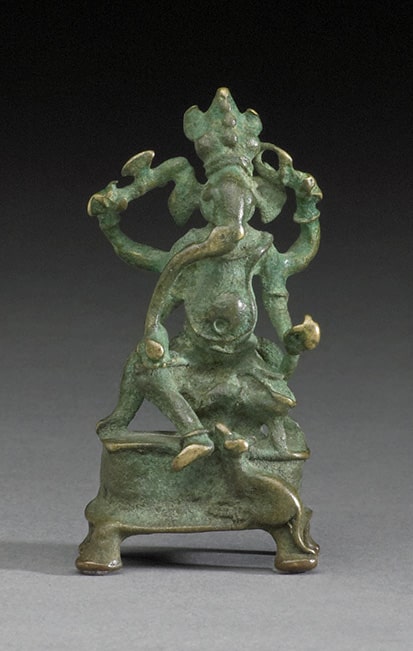
Potency is something that we are familiar with in our modern-day culture. For example, the way in which plants are distilled and concentrated to pharmaceuticals or how over time technology has become smaller and more powerful—to the point in which nanotechnology is being used inside the body in medical settings (or smart phones, anyone?).
The same principle can be applied to these small sculptures, as the power of the divine becomes concentrated into smaller spaces, there is the potential for increased potency. Coupled with the power of loving devotion, these small miniatures are deserving of our unhurried attention.



